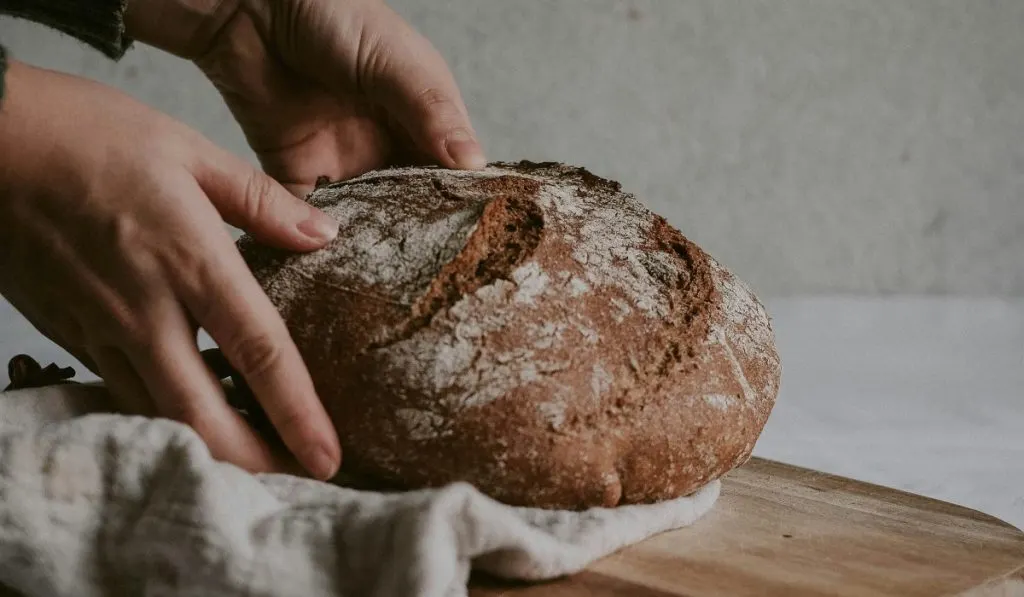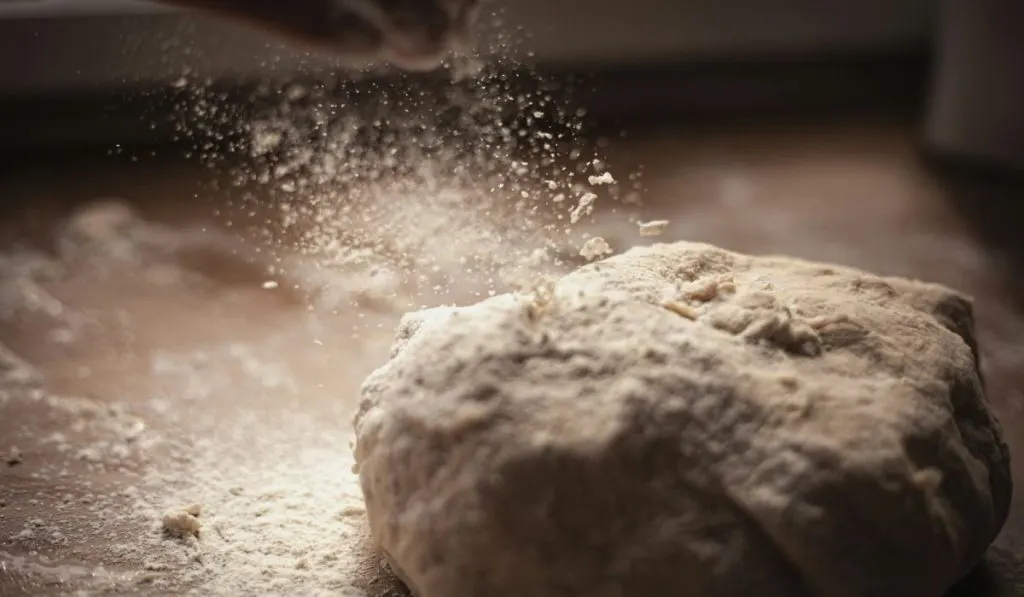
Have you ever found yourself craving the tangy, satisfying taste of sourdough bread but worried about the carbs? You’re not alone. Many of us are trying to cut down on carbohydrates while still enjoying our favorite foods. The good news is that you can have the best of both worlds with low-carb sourdough bread.
Imagine biting into a warm, crusty loaf of sourdough that’s not only delicious but also aligns with your low-carb lifestyle. Sounds too good to be true? It’s not! However, baking low-carb sourdough bread can be challenging without the right guidance. That’s where we come in.
In this comprehensive guide, we’ll walk you through everything you need to know about low-carb sourdough bread. From understanding the benefits to mastering the perfect recipe, we’ve got you covered. Let’s dive in and transform your baking game!
TL;DR
- Low-carb sourdough bread is made with alternative flours like almond and coconut flour, reducing carbohydrate content.
- It’s a healthier option, offering benefits like stable blood sugar levels and higher fiber content.
- Baking low-carb sourdough involves a shorter fermentation time and careful ingredient management.
- This bread is suitable for various diets, including keto and paleo, and can be more filling than traditional bread.
- Be mindful of allergens and storage requirements to maintain freshness and taste.
What is Low-Carb Sourdough Bread?
Low-carb sourdough bread is a contemporary variation of the classic sourdough, designed to cater to those who are mindful of their carbohydrate intake. Traditional sourdough is made with wheat flour, which is high in carbohydrates. However, low-carb sourdough replaces wheat flour with alternatives like almond flour, coconut flour, and flaxseed meal.
These flour substitutes significantly reduce the carbohydrate content while preserving the rich, tangy flavor that sourdough enthusiasts love. This modern twist allows you to enjoy your favorite bread without compromising your dietary goals, making it an excellent choice for those following low-carb, keto, or paleo diets. Whether you’re looking to manage your blood sugar levels or simply reduce your carb intake, low-carb sourdough offers a delicious and satisfying solution.
Nutritional Profile
Low-carb sourdough bread boasts a nutritional profile that aligns perfectly with health-conscious diets. Compared to traditional sourdough, it is significantly lower in carbohydrates and higher in fiber. The inclusion of almond and coconut flours not only reduces carbs but also introduces healthy fats and proteins into your diet. This combination makes low-carb sourdough bread a nutritious option for anyone looking to maintain a balanced diet.
Additionally, the high fiber content from ingredients like flaxseed meal and psyllium husk promotes digestive health and enhances gut microbiome. This bread fits seamlessly into low-carb, keto, and paleo diets, providing a wholesome alternative that supports weight management and overall well-being.
Texture and Taste
The texture and taste of low-carb sourdough bread set it apart from its traditional counterpart. Due to the use of alternative flours, low-carb sourdough tends to be denser and heavier than wheat-based sourdough. The texture can vary depending on the specific blend of flours used, often resulting in a nuttier or slightly sweet flavor profile, especially when almond flour is a primary ingredient. While the crust may be thinner and less crispy, the bread retains the rich, tangy flavor that sourdough is known for. This unique texture and taste make low-carb sourdough a delightful addition to your diet, providing a satisfying bread experience without the high carb content.
Low-Carb Sourdough Bread Benefits and Why Choose It
| Ingredient | Role | Benefits |
|---|---|---|
| Almond Flour | Base flour substitute | Lowers carbs, adds healthy fats and protein |
| Coconut Flour | Secondary flour substitute | Lowers carbs, boosts fiber content |
| Flaxseed Meal | Adds fiber and omega-3 fatty acids | Promotes digestion, enhances gut health |
| Psyllium Husk | Binds ingredients, adds fiber | Improves texture, boosts fiber content |
| Sourdough Starter | Fermentation agent | Adds live cultures, improves gut microbiome |
| Eggs | Binding agent, adds moisture | Adds protein, improves texture |
| Whey Protein Isolate | Optional protein boost | Increases protein content, aids muscle repair |
| Water | Hydrates the flour | Essential for the dough consistency and fermentation |
Health Benefits of Low-Carb Sourdough Bread
1. Lower Carbohydrates: Traditional sourdough is high in carbs, which can spike blood sugar levels. Low-carb sourdough provides a healthier alternative, making it suitable for low-carb, keto, and paleo diets.
2. Higher Fiber Content: Ingredients such as flaxseed meal and psyllium husk boost the fiber content, promoting better digestion and enhancing gut health.
3. Protein-Rich: Almond and coconut flours are packed with protein, aiding muscle repair and growth, and keeping you fuller for longer.
4. Stable Blood Sugar Levels: The reduced carb content helps in managing blood sugar levels, making it an excellent choice for diabetics and those looking to maintain steady energy throughout the day.
5. Gluten-Free Options: While not always entirely free from gluten cross-contamination, low-carb sourdough can be a good option for those with gluten sensitivities.
6. Improved Satiety: The combination of high fiber and protein content helps you feel full longer, reducing the temptation to snack between meals.
Why Choose Low-Carb Sourdough Bread?
Switching to low-carb sourdough bread supports a healthier lifestyle without sacrificing taste. It’s a versatile addition to various dietary preferences, offering the same delicious, tangy flavor of traditional sourdough. The higher fiber and protein content provide additional health benefits, promoting digestive health and helping to maintain steady blood sugar levels. Furthermore, it fits well into keto and paleo diets, making it an excellent choice for those looking to enjoy bread while adhering to their nutritional goals. Try baking low-carb sourdough at home for a nutritious and satisfying bread option.
Low-Carb Sourdough Bread Recipe

Ready to get started? Baking low-carb sourdough bread at home is easier than you might think. Here’s a step-by-step guide to help you achieve the perfect loaf.
Ingredients
- 1 cup almond flour
- 1/2 cup coconut flour
- 2 tbsp flaxseed meal
- 2 tbsp psyllium husk powder
- 1/2 cup sourdough starter
- 4 large eggs
- 1/2 cup warm water
- 1/4 cup whey protein isolate (optional for extra protein)
- 1 tsp salt
Instructions
- Prepare the Starter: Ensure your sourdough starter is active. Feed it a few hours before you plan to bake.
- Mix Dry Ingredients: In a large bowl, combine almond flour, coconut flour, flaxseed meal, psyllium husk, salt, and whey protein isolate if using.
- Add Wet Ingredients: In a separate bowl, beat the eggs and mix in the sourdough starter and warm water.
- Combine: Gradually add the wet ingredients to the dry mixture, stirring until a dough forms.
- Knead: Knead the dough for a few minutes until it’s well combined.
- Shape and Rise: Shape the dough into a loaf and place it on a parchment-lined baking sheet. Cover with a damp cloth and let it rise for 2-3 hours.
- Preheat Oven: Preheat your oven to 375°F (190°C).
- Bake: Bake the loaf for 30-40 minutes until the crust is golden and a toothpick inserted in the center comes out clean.
- Cool: Let the bread cool completely on a wire rack before slicing.
A Nutritious and Delicious Alternative: Low-Carb Sourdough Bread Recipe
Ingredients
- 2 cups raw low-carb nuts/seeds (pecans, Brazil nuts, macadamia nuts, etc.), soaked for 2 hours in warm filtered water, then drained and rinsed
- ¾ cup chia seed meal (pulse about ⅔ cup chia seeds in a coffee grinder or blender to create meal, then measure)
- ½ cup pure water (no chlorine)
- 2 whole eggs + 2 egg whites
- ¼ cup coconut flour
- ¼ cup psyllium husk powder
- ¼ cup low-carb granulated sweetener (coconut sugar/maple sugar)
- ¼ cup avocado oil or olive oil
- ¼ cup sauerkraut liquid
- 1 teaspoon sea salt
- ½ teaspoon baking soda, sifted
Ingredients, Role, and Benefits
| Ingredient | Role | Benefits |
|---|---|---|
| Nuts/Seeds | Base ingredient, provides structure and flavor | Low in carbs, high in healthy fats, protein, and fiber. Supports heart health and satiety. |
| Chia Seed Meal | Binder, adds texture | High in omega-3 fatty acids, fiber, and antioxidants. Supports digestion and heart health. |
| Pure Water | Hydrates ingredients | Essential for proper dough consistency and fermentation. |
| Eggs | Binding agent, adds moisture and structure | High in protein, supports structure, and adds richness. |
| Coconut Flour | Flour substitute | Low in carbs, high in fiber. Adds a subtle sweetness and improves digestion. |
| Psyllium Husk | Binder, adds texture and fiber | High in soluble fiber. Supports digestive health and adds structure. |
| Sweetener | Adds sweetness | Low-carb option to maintain sweetness without high glycemic impact. |
| Avocado/Olive Oil | Adds moisture and richness | High in healthy fats. Supports heart health and adds a rich texture. |
| Sauerkraut Liquid | Fermentation agent | Adds probiotics. Enhances gut health and adds a tangy flavor. |
| Sea Salt | Enhances flavor | Essential mineral. Enhances flavor and supports overall health. |
| Baking Soda | Leavening agent | Helps bread rise. Creates a lighter texture and improves dough structure. |
Instructions
- Prepare Nuts/Seeds: In a food processor or high-powered blender, purée soaked nuts/seeds with filtered water and oil until mostly smooth (about 1 minute). Add sauerkraut juice and pulse until combined (about 10 seconds). Transfer to a glass or ceramic bowl and stir in chia seed meal well.
- Fermentation: Cover loosely with a towel or plate. Place in a very warm location (95-105°F) for 10 hours or overnight. A warming mat or the Yogurt setting on an Instant Pot can help. In a cooler kitchen, fermentation may take up to 24 hours.
- Preheat Oven: Once fermentation is complete, preheat the oven to 350°F. Grease the ends of a loaf pan and line with parchment paper for easy removal.
- Mix Dry Ingredients: Sift together coconut flour, psyllium husk powder, sweetener, baking soda, and sea salt. Set aside.
- Combine Ingredients: Add eggs to the fermented nut/seed mixture, then add the flour mixture. Mix with handheld electric beaters until thoroughly combined. Shape the dough into a loose loaf and place into the prepared pan, smoothing the top to slightly mound in the middle.
- Bake: Bake for 55 minutes, or until a knife inserted into the center comes out clean. Check at 45 minutes to avoid overbaking. The loaf should be well browned.
Notes
Soaking Nuts/Seeds: Soaking softens the nuts/seeds for easier puréeing. Simply cover them with water and leave for 2 hours or overnight. Strain and rinse before use. Roughly chop larger nuts like Brazil nuts to avoid large chunks.
Tips for Perfect Low-Carb Sourdough Bread
Baking low-carb sourdough bread can be a bit different from traditional methods. Here are some tips to ensure success:
- Monitor Hydration: Low-carb flours absorb more moisture, so adjust water content as needed.
- Avoid Over-Baking: Nut flours can burn easily, so keep an eye on your bread in the oven.
- Experiment with Flours: Try different combinations of almond, coconut, and flaxseed flours to find your preferred texture and taste.
- Use Fresh Ingredients: Ensure your sourdough starter is active and your flours are fresh for the best results.
Storage and Freezing
Low-carb sourdough bread tends to be denser and requires proper storage to maintain its freshness:
- Refrigeration: Store the bread in an airtight container in the refrigerator. It can last up to a week.
- Freezing: For longer storage, slice the bread and freeze it. Thaw slices as needed. Note that freezing may affect the texture slightly.
Conclusion
Baking low-carb sourdough bread at home is a rewarding and fulfilling experience that lets you indulge in the delicious, tangy taste of sourdough while sticking to a low-carb lifestyle. With the right ingredients and a bit of practice, you can craft a loaf that not only tastes great but also supports your health goals. This bread is a perfect addition to keto, paleo, and low-carb diets, offering a nutritious alternative to traditional bread.
For the best results, always use fresh, high-quality ingredients. Pay close attention to the hydration levels of your dough, as low-carb flours absorb more moisture. Don’t be afraid to experiment with different flour combinations to find your preferred taste and texture. Additionally, keep an eye on the baking time to prevent the nut flours from burning.
A personal tip: Let the dough rise in a warm, draft-free area to achieve the best fermentation. This will help develop the rich, tangy flavor that makes sourdough so special. Lastly, enjoy the process and don’t rush it; the fermentation time is key to achieving that perfect loaf. Happy baking!
FAQs
What is low-carb sourdough bread made of?
Low-carb sourdough bread is typically made with almond flour, coconut flour, flaxseed meal, psyllium husk, eggs, and a sourdough starter.
Is low-carb sourdough bread gluten-free?
While it is suitable for gluten-sensitive individuals, it may not be completely free from gluten cross-contamination.
How does low-carb sourdough bread taste?
The taste can vary depending on the flour blend used, but it often has a nuttier or slightly sweet flavor compared to traditional sourdough.
What are the health benefits of low-carb sourdough bread?
It offers lower carbohydrate content, higher fiber, and protein levels, making it beneficial for blood sugar management and more filling than traditional bread.
Can I freeze low-carb sourdough bread?
Yes, you can freeze it. Slice the bread before freezing for convenience, but be aware that the texture may change slightly upon thawing.
Join Us and Transform >
Don’t Be an Amateur! Master the Art of Sourdough Bread!




Leave a comment